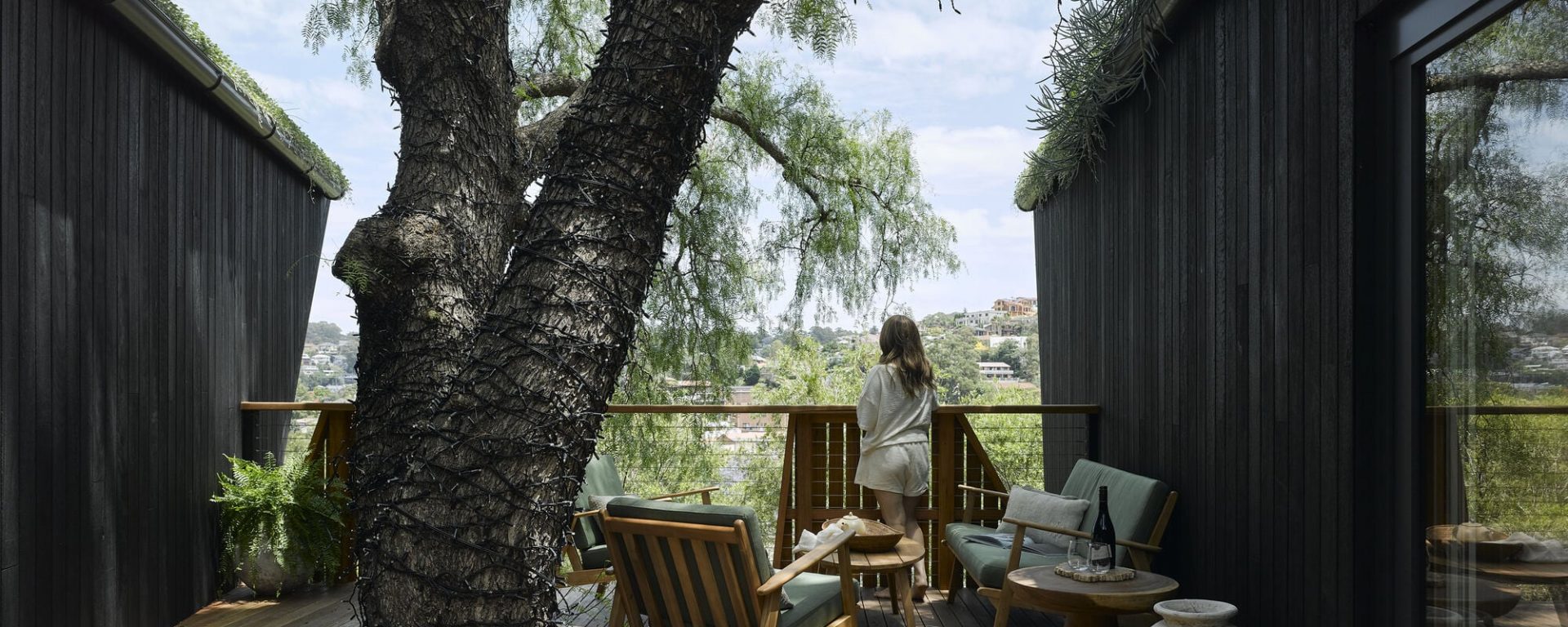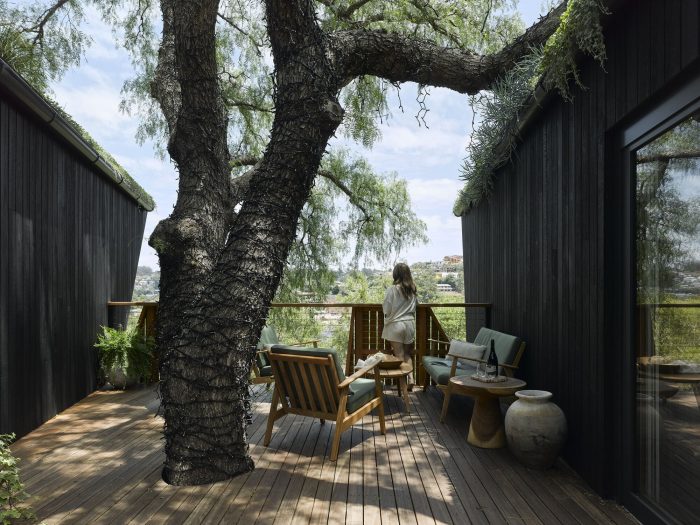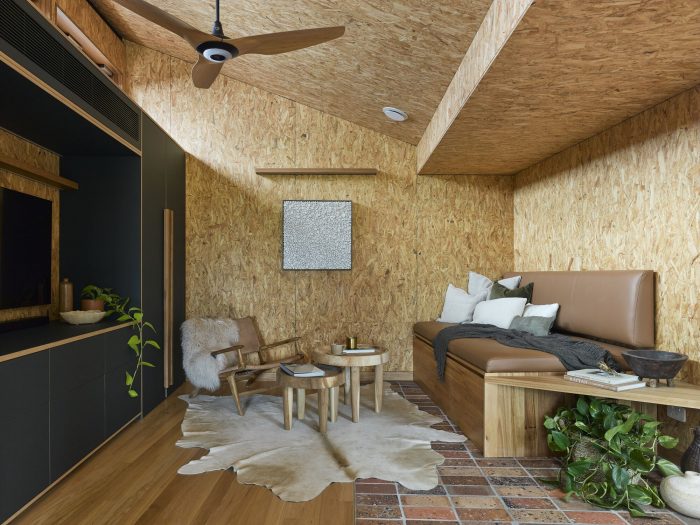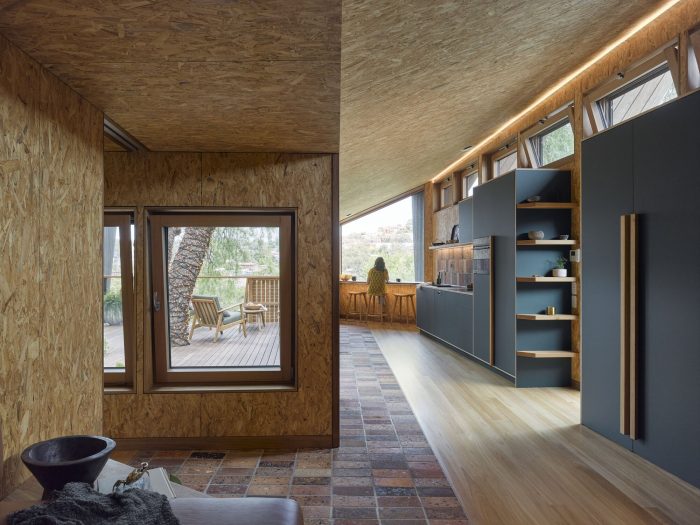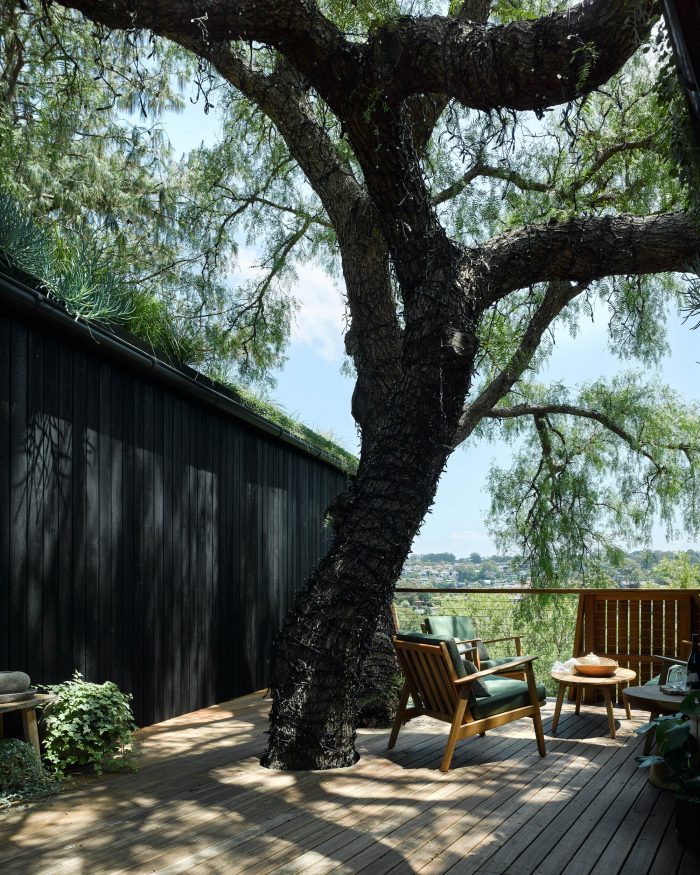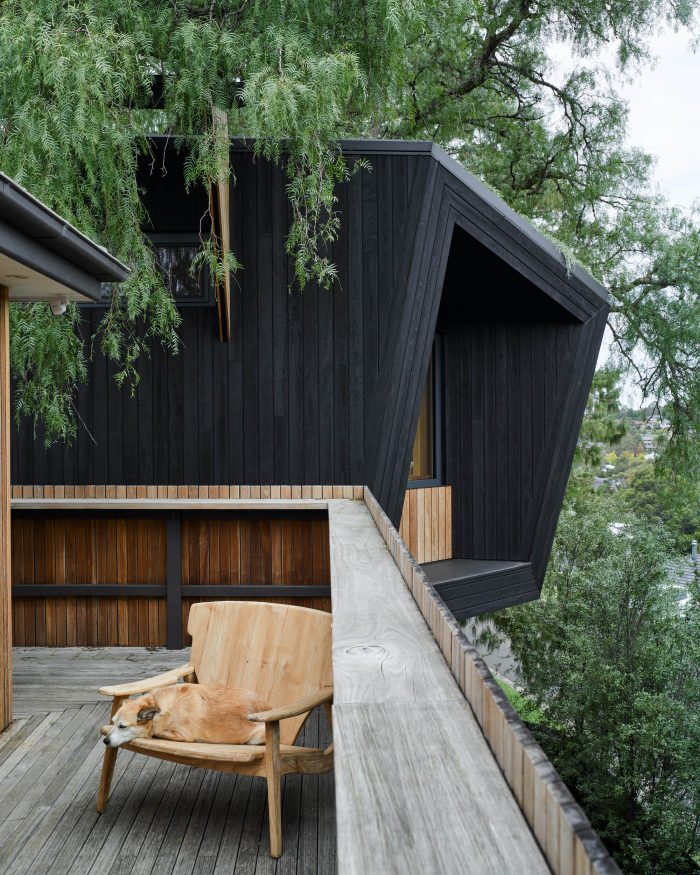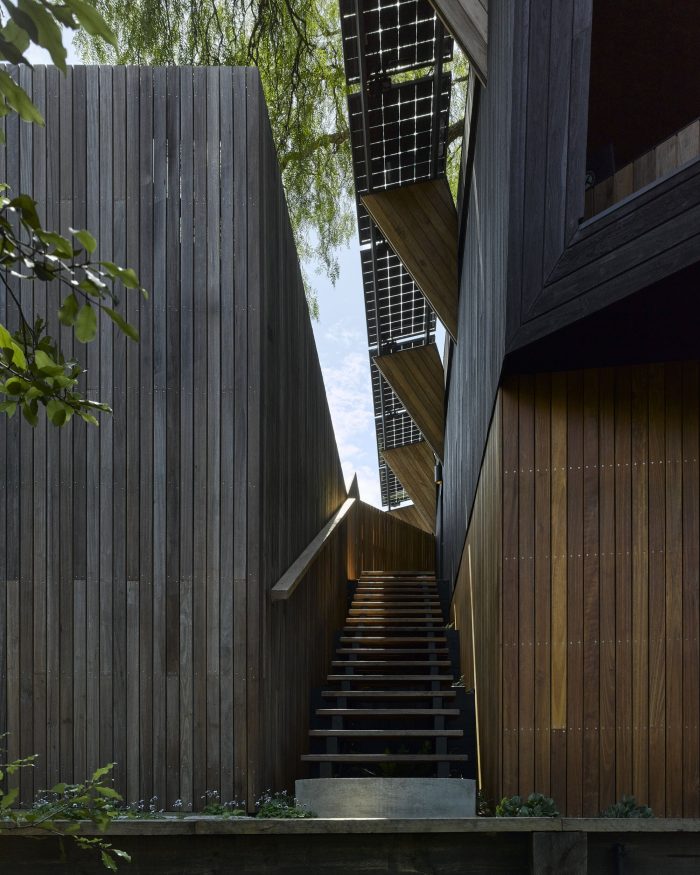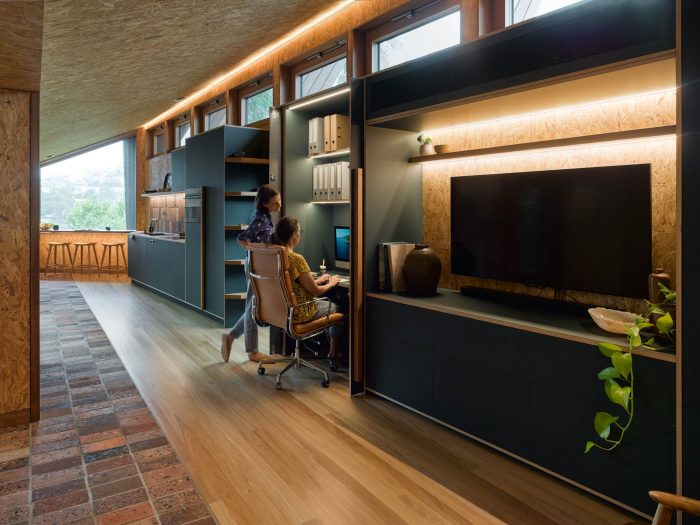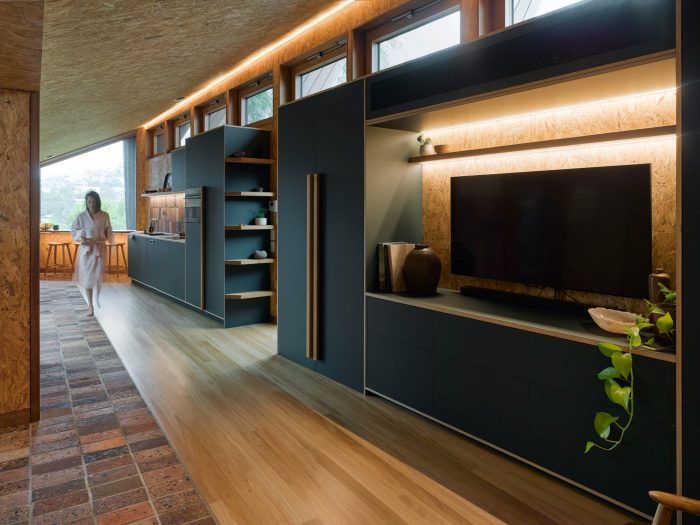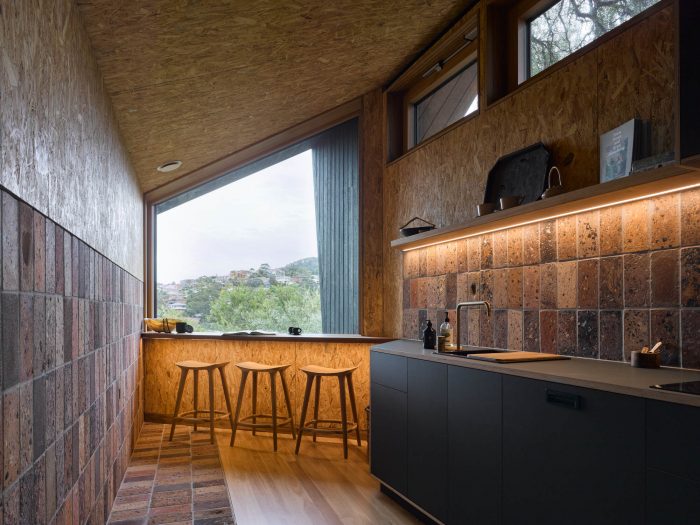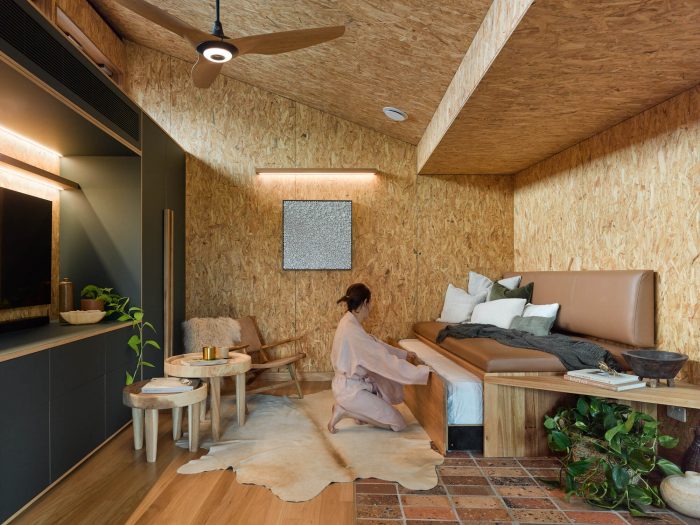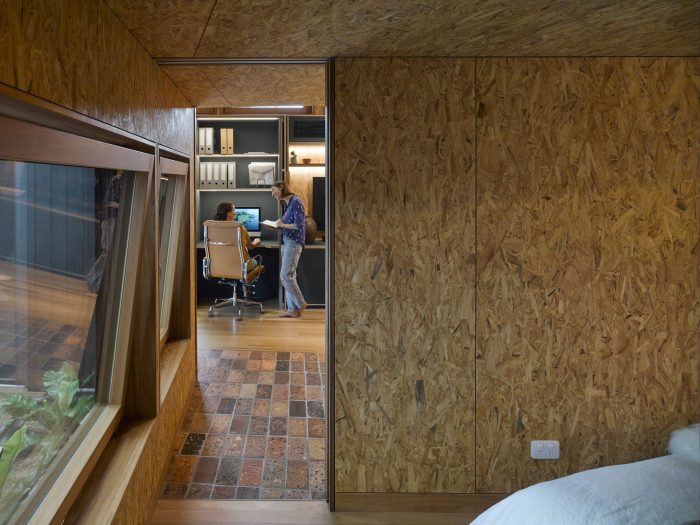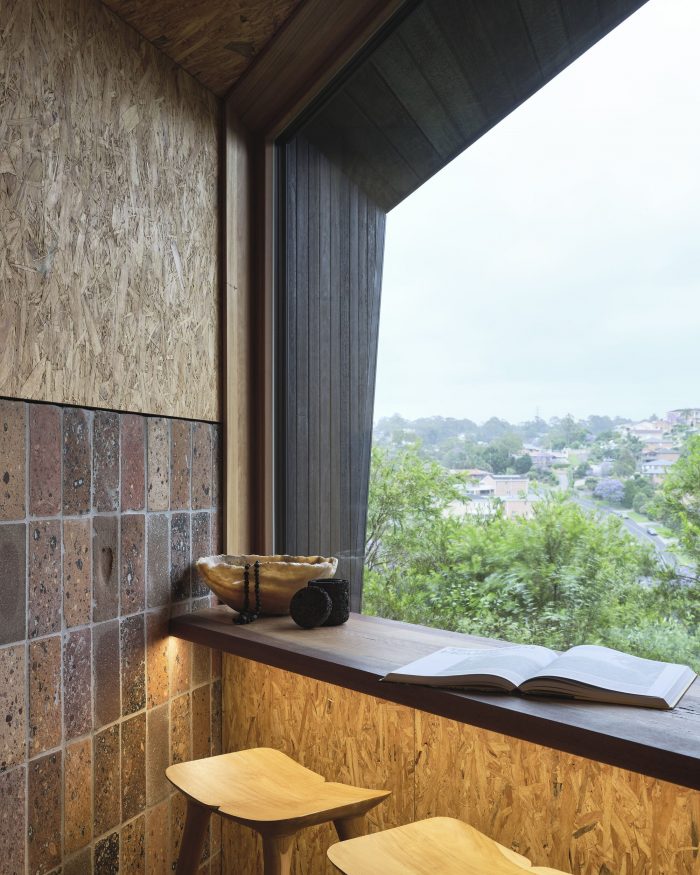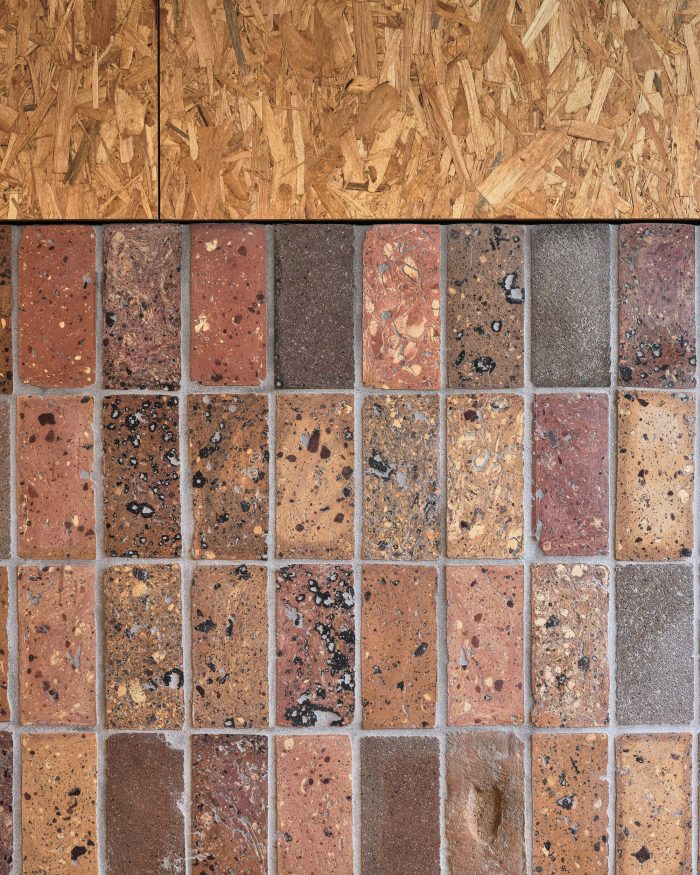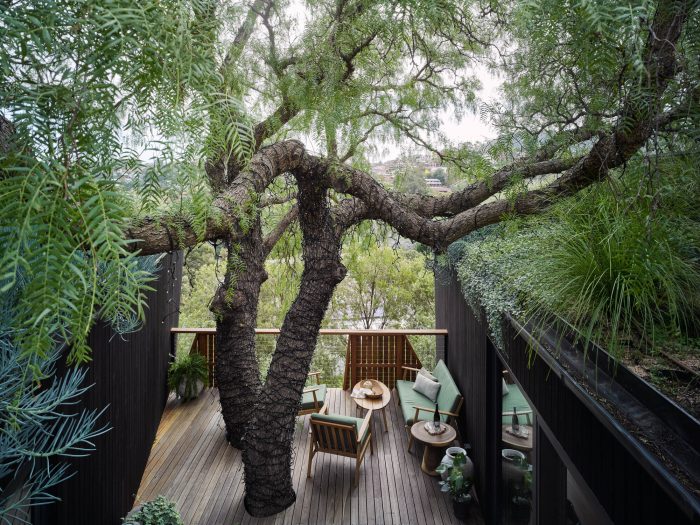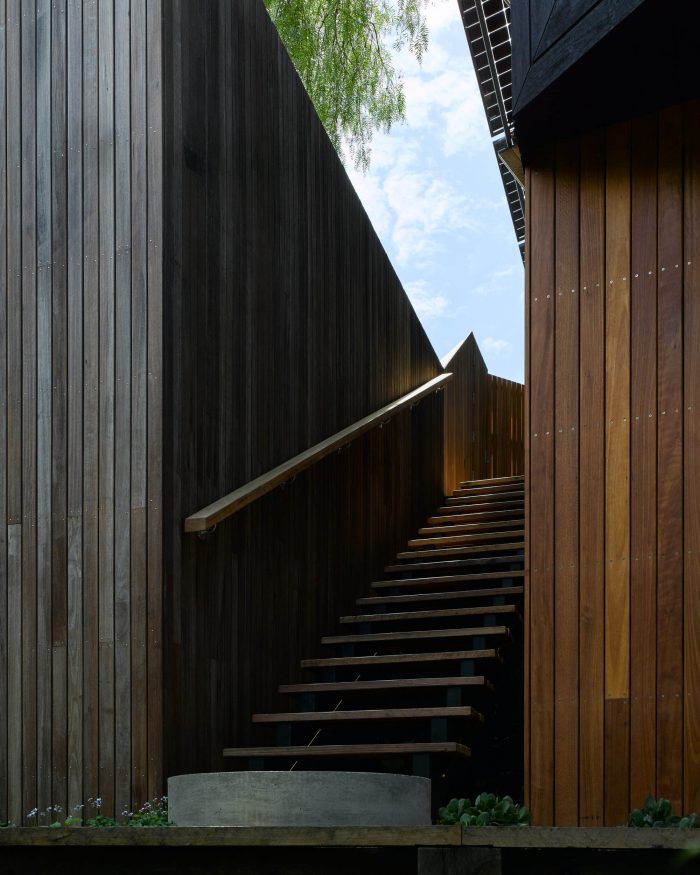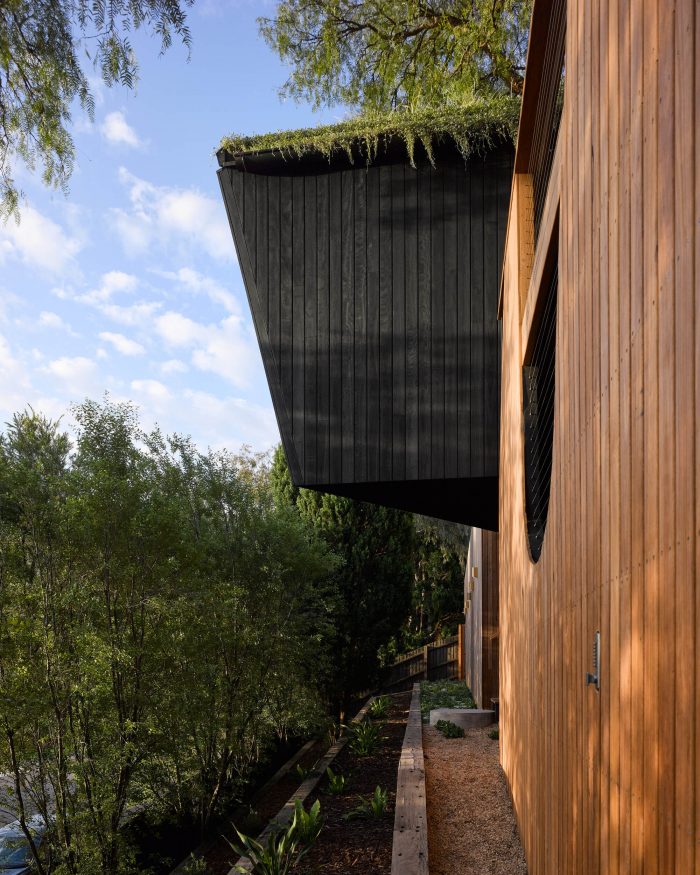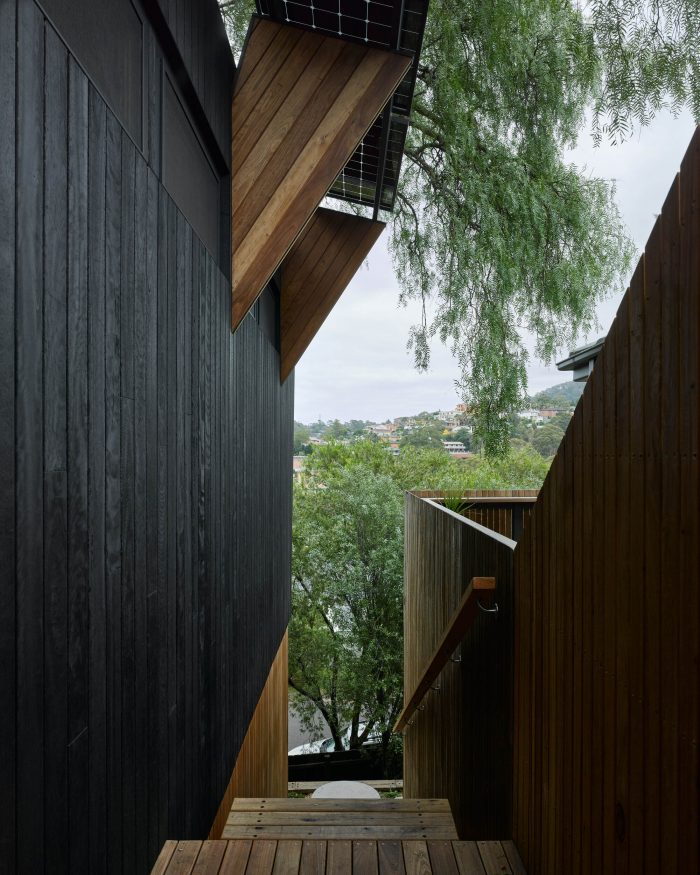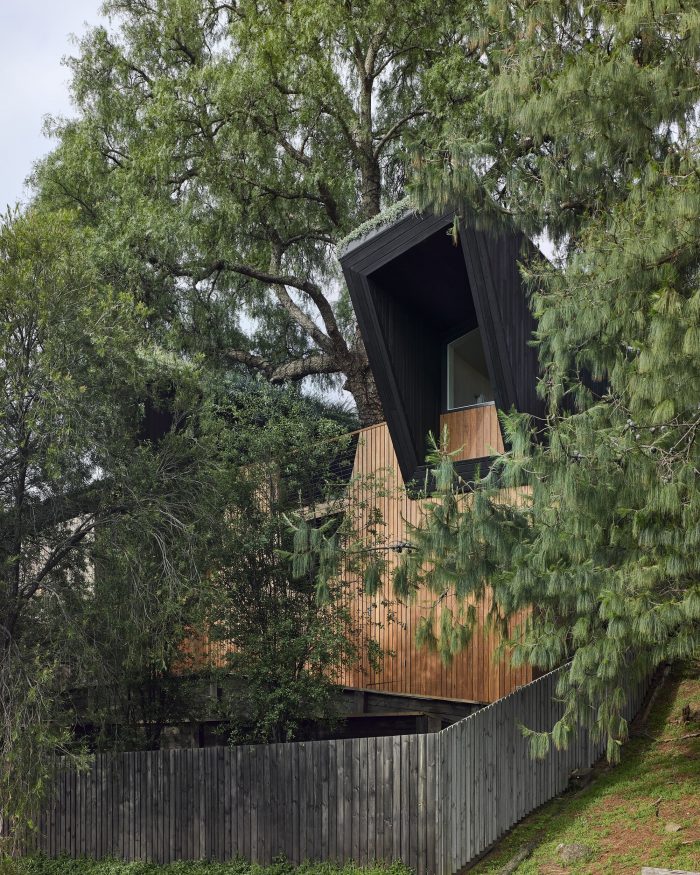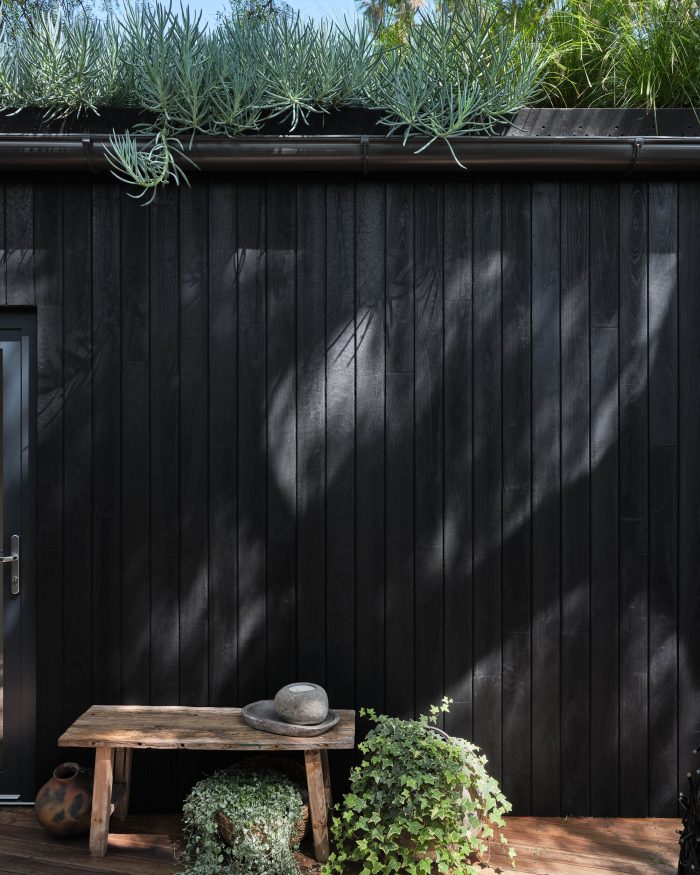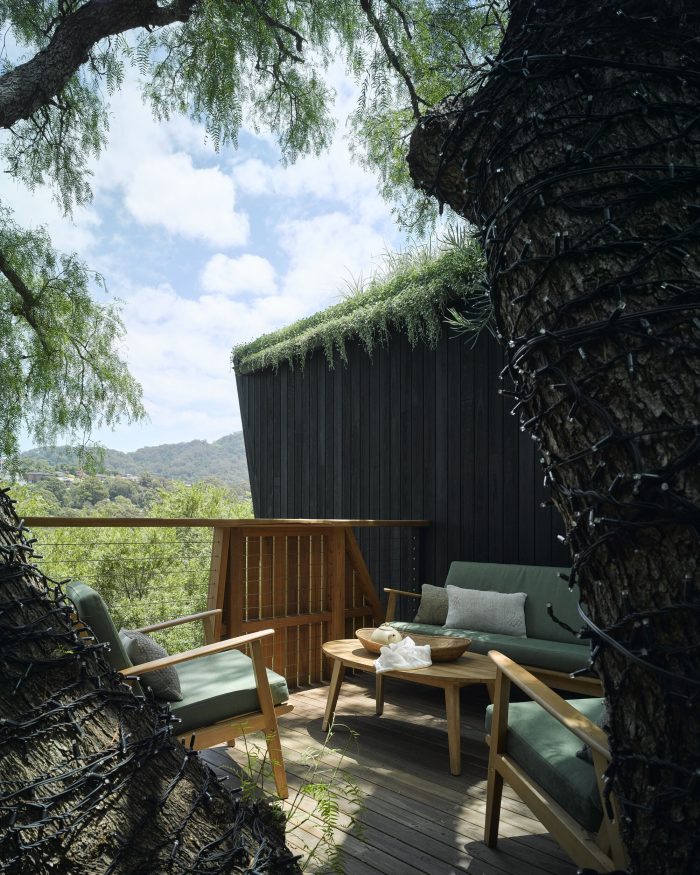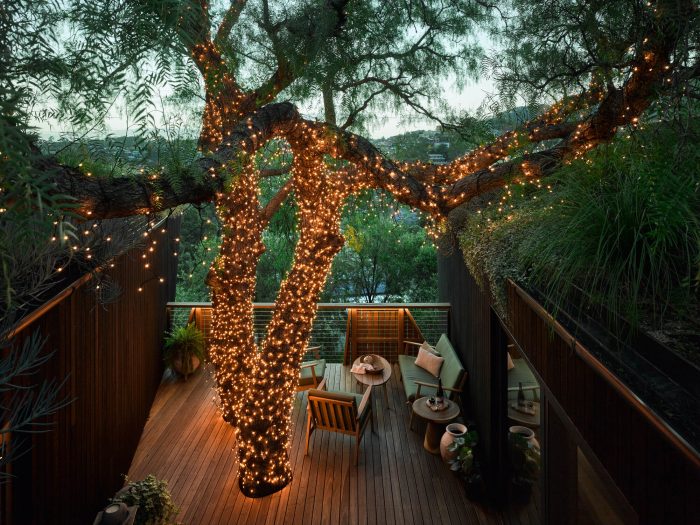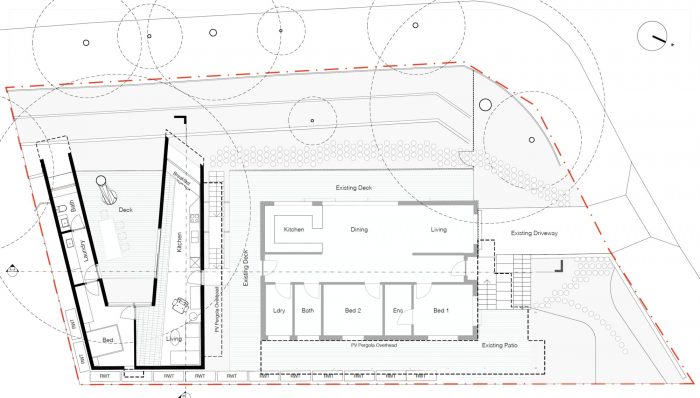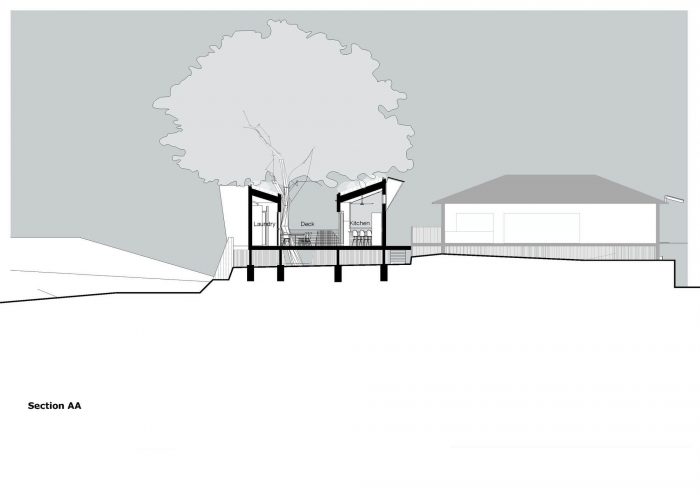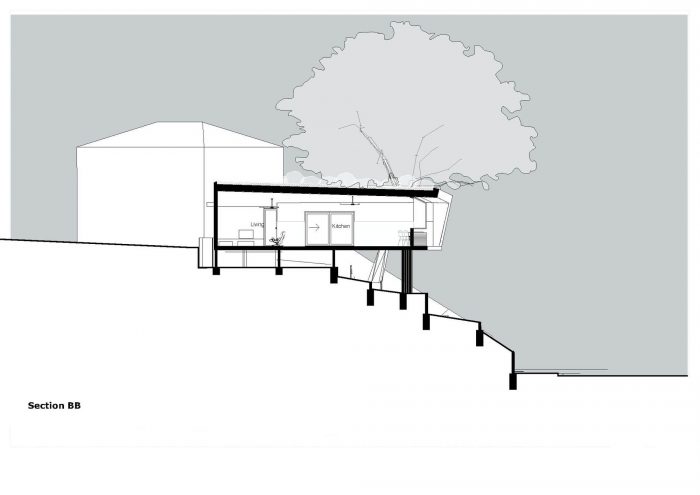胡椒树被动房是澳大利亚伊拉瓦拉地区一个年轻家庭的小型辅助住宅,它坐落在一个陡峭的场地上,并被抬高到该地同名的60岁的胡椒树的树冠上。该项目按照国际被动房标准建造,真正的可持续发展是项目的核心精神–体现在自然材料调色板、高性能设计和强烈的亲生物性联系上。两个悬臂式翼楼都有一个绿色屋顶,上面种满了澳大利亚本土植物,使建筑与景观融为一体。
Pepper Tree Passive House is a small secondary dwelling to a young family’s home in the Australian Illawarra region, perched on a steep site and elevated into the canopy of the site’s eponymous 60-year-old Pepper Tree. Built to the international Passive House standard, true sustainability is at the core ethos of the project – embodied between the natural material palette, high-performance design, and strong biophilic connection. The two cantilevered wings each host a green roof, filled with native Australian plants, blending the building into the landscape.
次级住宅为客户不断发展的公司提供了急需的独立办公空间,同时也为客人提供了住宿空间,适合短期住宿。对现有住宅的改造提高了空间的热舒适度,并创造了新的娱乐空间。在自然和原始材料的调色板之间,包括大量木材的使用、特有的屋顶花园和树冠平台,整个场地的亲生关系得到了加强。
The secondary dwelling provides much-needed separate office space for the clients’ growing company, as well as providing space for guest accommodation and being geared for short-stay accommodation. The works to the existing home improve the thermal comfort of the space and create new entertaining spaces throughout. Between the natural and raw material palette including extensive timber use, endemic rooftop gardens, and tree canopy deck, the biophilic connection of the entire site is strengthened with its immediate environment.
二级住宅依偎在胡椒树的树冠下,轻巧地坐落在陡峭的场地上,并通过其绿色屋顶抬高了自然地面,回收的寿杉板覆层使建筑融入其环境。
Nestled into the tree canopy of the Pepper Tree, the secondary dwelling sits lightly on the steep site and elevates the natural ground via its green roofs, with the recycled Shou Sugi Ban cladding allowing the building to blend into its environment.
以前暴露在下面的街角,现有住宅的环绕式平台创造了娱乐空间,为街道提供了噪音和视觉缓冲,并可直接从街边的树冠上看到肯布拉山。该项目为郊区的场地增加了亟需的可用空间,而没有过度开发或牺牲生物亲和力。
Previously exposed to the street corner below, the wrap-around deck to the existing home creates spaces for entertaining that provide both noise and visual buffer to the street, and direct views over the street tree canopies towards Mount Kembla. The project adds much-needed usable floor space to the suburban site without overdeveloping or sacrificing biophilic connection.
通过使用回收和废弃的材料,在不影响材料质量的情况下大大降低了成本。被动式房屋标准和12千瓦的光伏板系统意味着该项目整体的电网能源消耗仅为同等规模房屋的14%(减少86%),大大降低了客户的终身成本。相对于将160平方米的热能升级到被动房标准,只有60平方米的面积在未来的高峰气候条件下实际是舒适的。这种方法提供了一个先例,即创建小型的面向未来的附加建筑,这样我们就可以适应气候,而不需要花费大量的成本来升级所有现有的住宅。
By using salvaged and waste materials throughout, costs were significantly reduced without sacrificing material quality. Passive House standard and 12kW photovoltaic panel system mean that the project’s overall grid energy consumption is only 14% of a comparably sized home (86% reduction), significantly reducing the lifetime cost to the clients. As opposed to thermally upgrading 160m2 to the passive house standard, only 60m2 will actually be comfortable in future peak climatic conditions. This approach provides a precedent for creating small future-proofed additions so that we can be climate adaptive without the massive cost of upgrading all existing dwellings.
Architects: Alexander Symes Architect
Area : 60 m²
Year : 2021
Photographs :Barton Taylor
Manufacturers : Brink Climate Systems, Neuffer
Builder : Souter Built
Interior Design : Paiano Design
Structural Engineer : Northrop
Council : Wollongong City Council
Landscape Architect : Grant Clement
Country : Australia

